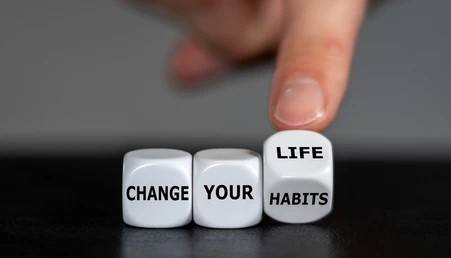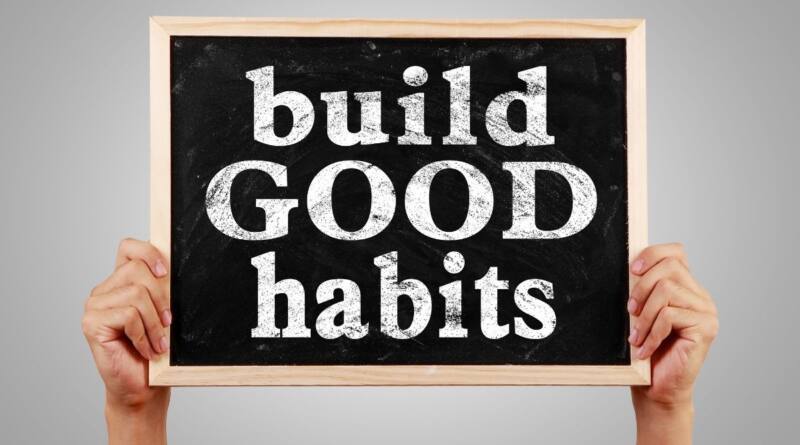The Simplistic Art Of Building Better Habits To Empower Youth
Attending college is one of the finest experiences one gets to have; it doesn’t matter which field or college.
Getting into a good nursing college was one of my many aims in 2019 as I passed my 12th grade, but COVID-19 had different plans for all of us. I was dealing with something with which no one had dealt, with which my parents couldn’t help me, and my peers were also facing it; all in all, we did not have any solution with us. We just went by, hoping it would get over altogether.
Life was stuck for us for more than 2 years. I was freshly out of school, looking for options and what I could explore with my interest, and so I began waiting for a good nursing college.

But in those 2 years when I was experiencing something that nobody had faced before, I was very bent on making the most of it. I learned the concept of “building habits” by exploring the internet, books, or any source I could help myself with.
I built good sleep habits and went to bed early each night, and later on, when I started living in a hostel, I made a point to keep my room neat. These improvements were minor, but they gave me a sense of control that I was losing in the COVID years. I started to feel confident again. And this growing belief in myself rippled into the classroom as I improved my study habits and managed to earn straight A’s.
Habits are nothing but what we do consistently, or we can say what we perform regularly, and as each semester passed, I accumulated small but consistent habits that ultimately led to results that I have always wanted for myself.
We all face challenges in life. The experiences that we get make for a good and critical life lesson, which is that “changes that seem small and unimportant at first will compound into remarkable results if you are willing to stick with them for years”
There might be people who can achieve things overnight, but I am certainly not one of them. I had to learn and evolve to get the most out of things.
The backbone of building any habit is:
- CUE
- CRAVING
- RESPONSE
- REWARD
This 4-step pattern is the backbone of every habit, and your brain runs through these patterns in the same order each time.
First there is the cue; it triggers your brain to initiate a behaviour. Basic cues that we are already aware of could be money, fame, power and status, praise and approval, love and friendship, or a sense of personal satisfaction.
These cues naturally lead to cravings. This is the second step, and they are the motivational force behind every habit. Without any motivation, craving, or source, it is next to impossible to build a habit; we have no reason to act. Cravings differ from person to person.
The third step is the response; it is the actual habit that you perform, and finally, the response delivers a reward. Whatever we do, we do it for the reward. Our brain is a reward detector.
The cue is about noticing the reward, and the craving is about wanting the reward. The response is about obtaining the rewards. And we chase rewards because:
1. They satisfy us;
2. They teach us.
The four-step process is not something that happens occasionally, but rather an endless feedback loop that is always running and active during every moment you are alive—even now. The brain is continually scanning the environment, predicting what will happen next, trying out different responses, and learning from the results. The entire process is completed in a split second.
We can split these steps into two phases:
- The problem phase includes cue and craving, and it is when you realise that something needs to change.
- The solution phase includes the response and reward, and it is when you take action and achieve the change you desire.
| PROBLEM | PHASE | SOLUTION | PHASE |
| You walk into a dark room. | You want to be able to see. | You flip the light switch on. | You satisfy your craving to see by turning on the switch. It becomes associated with being in a dark room. |
| You feel demotivated all the time. | You want to relieve your stress and frustration. | You pull out your gadgets and indulge in them. | You satisfy your need to de-stress by checking social media, scrolling through games, etc. Now, whenever you feel stressed, you indulge in gadgets. |
| You wake up. | You want to feel alert. | You drink a cup of coffee. | You satisfy your craving to feel alert. Drinking coffee becomes associated with waking up. |
All behaviour is driven by the desire to solve a problem. Sometimes the problem could be something that requires the solution of adding something new, and sometimes the problem could be anything that requires the solution of eliminating. Either way, the purpose of every habit is to solve problems that you face.
In the table on the following page, you can see a few examples of what this looks like in real life.
Now the main question that arises is: how do we create good habits?
For that, you need to work according to the laws, which are:
- The 1st law: CUE, you have to make your cue very OBVIOUS. And for that, you have to be aware of your habits. You can make a habit scorecard to use so that you become aware of your behavior. You have to make specific additions to location and time to build a good habit. (Example: I AM GOING TO MEDITATE AT MY TERRACE FOR 15 MINUTES AT 6:30 AM TOM MORNING). And you can also learn to do habit stacking, in which you can add one more habit alongside what you have been doing for a long time.
- The second law is CRAVING. You have to make your craving attractive; the more attractive an opportunity is, the more likely it is to become habit forming. Temptation bundling is one way to make your habits more attractive. The strategy is to pair an action you want to do with an action you need to do and be part of those groups where cravings could be shared, i.e., both parties have similar outlooks and approaches. If a behaviour can get us approval, respect, and praise, we find it attractive.
- The 3rd law: RESPONSE, you have to make it easy; for this, you have to be in action and not in motion. Practicing more than planning. Create an environment where doing the right thing is as easy as possible; stop procrastinating.
- The 4th law: REWARD. For this, you have to make it.
We can invert these laws to learn how to break a bad habit as well. For the first law, you can try to make the cue invisible; for craving, you can make it unattractive; for response, you can try and make it difficult so that it becomes almost impossible to perform; and lastly, you can make the reward extremely unsatisfying by thinking of the outcomes and consequences.






I have read some excellent stuff here Definitely value bookmarking for revisiting I wonder how much effort you put to make the sort of excellent informative website